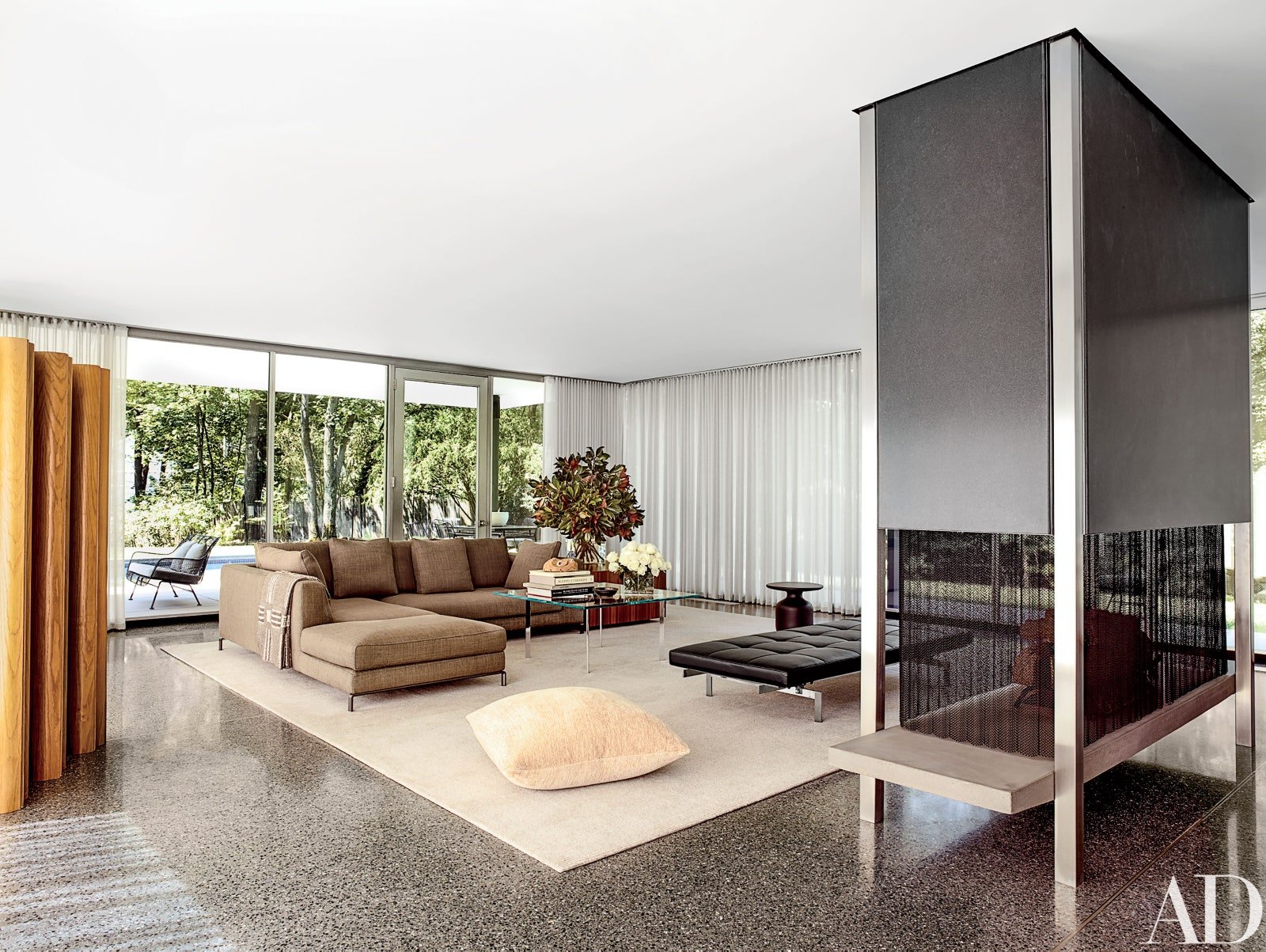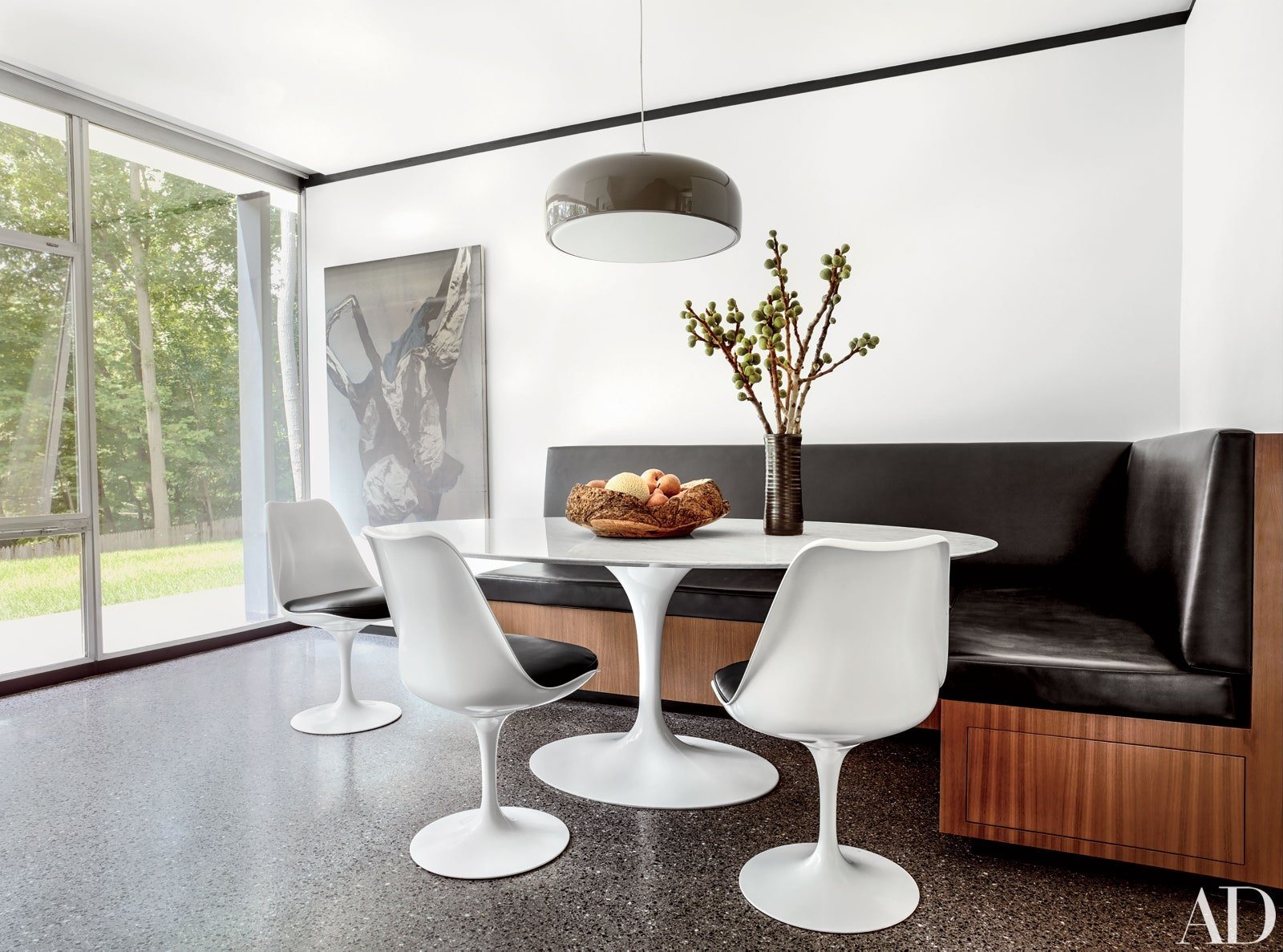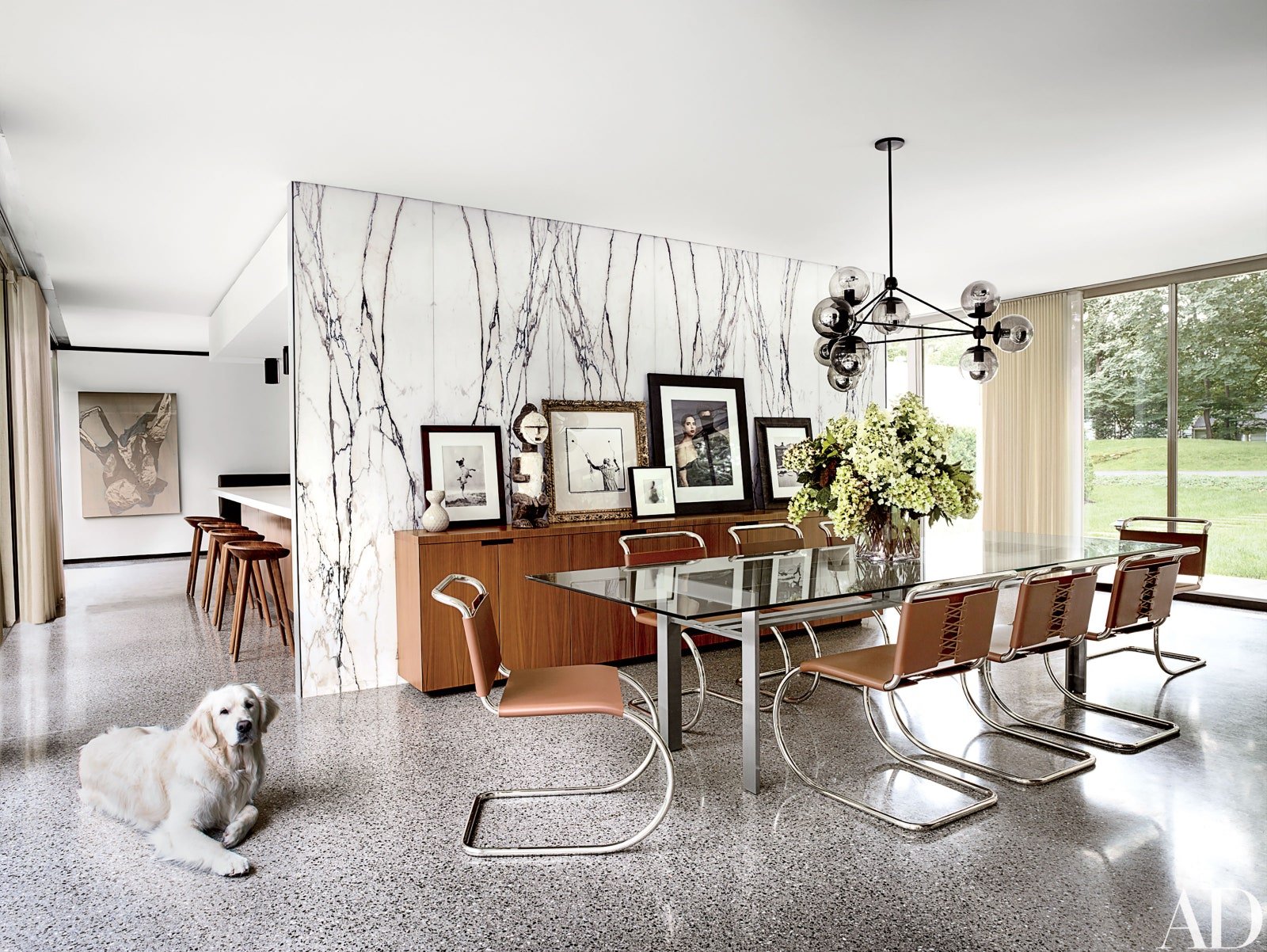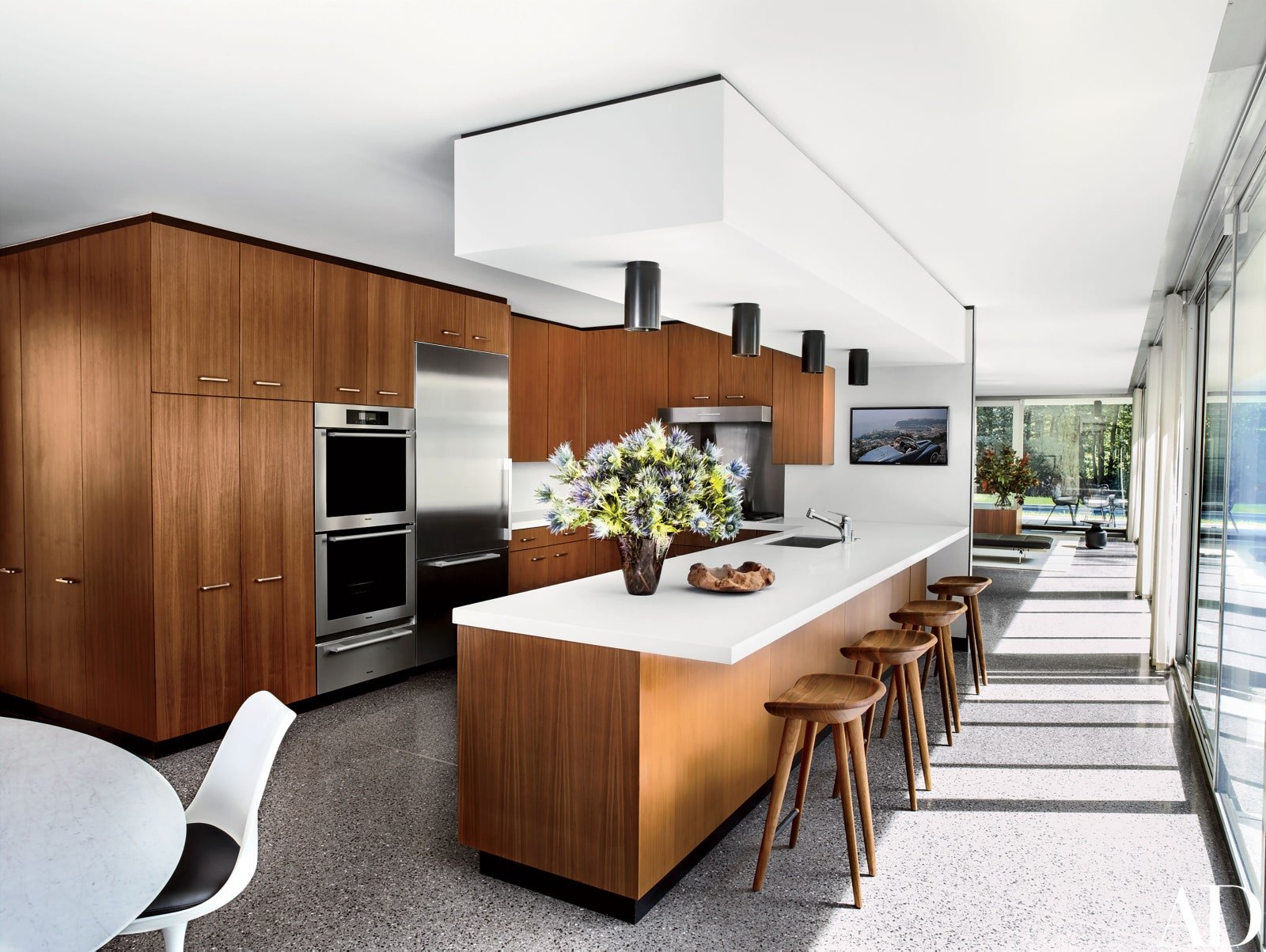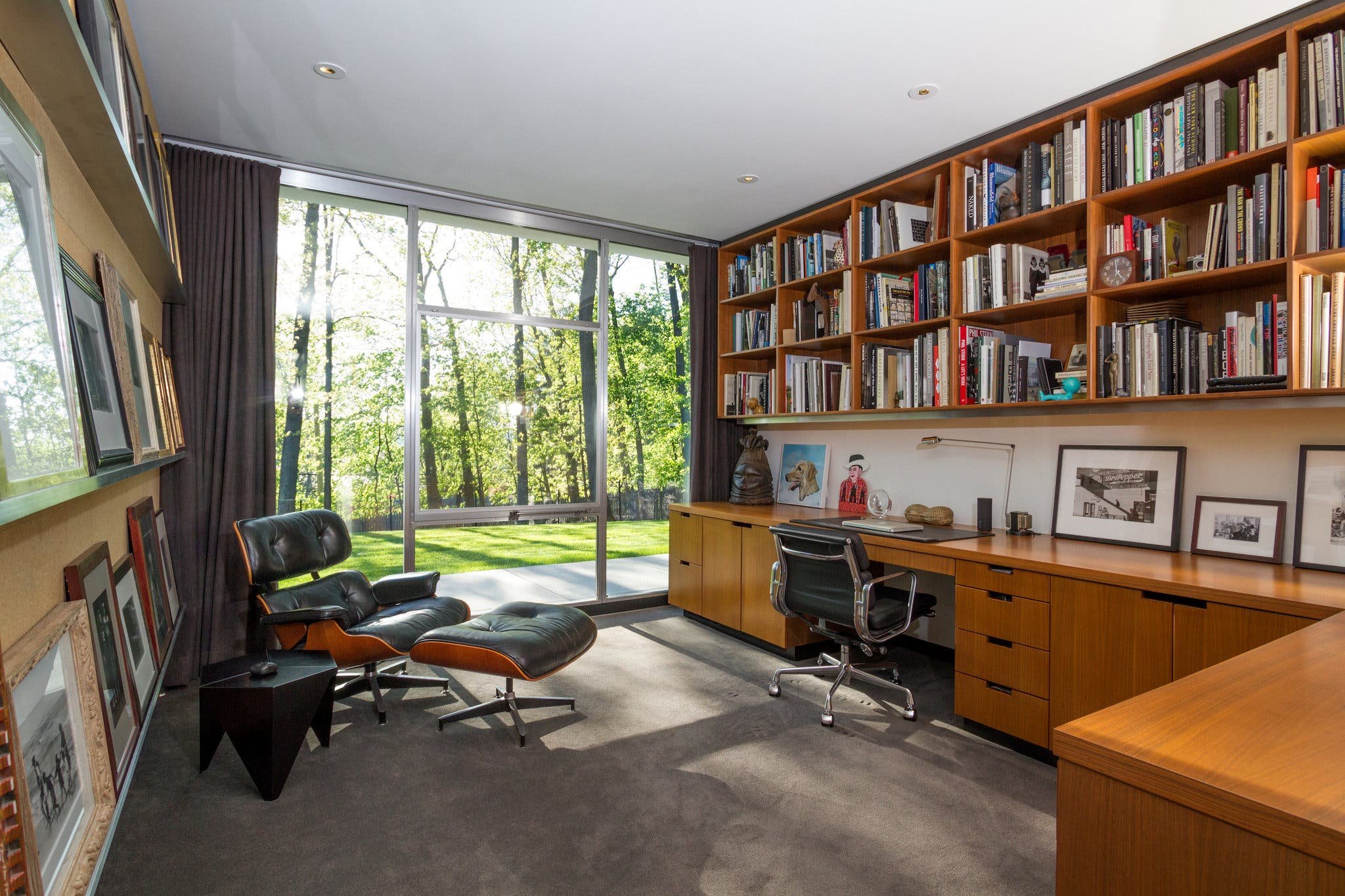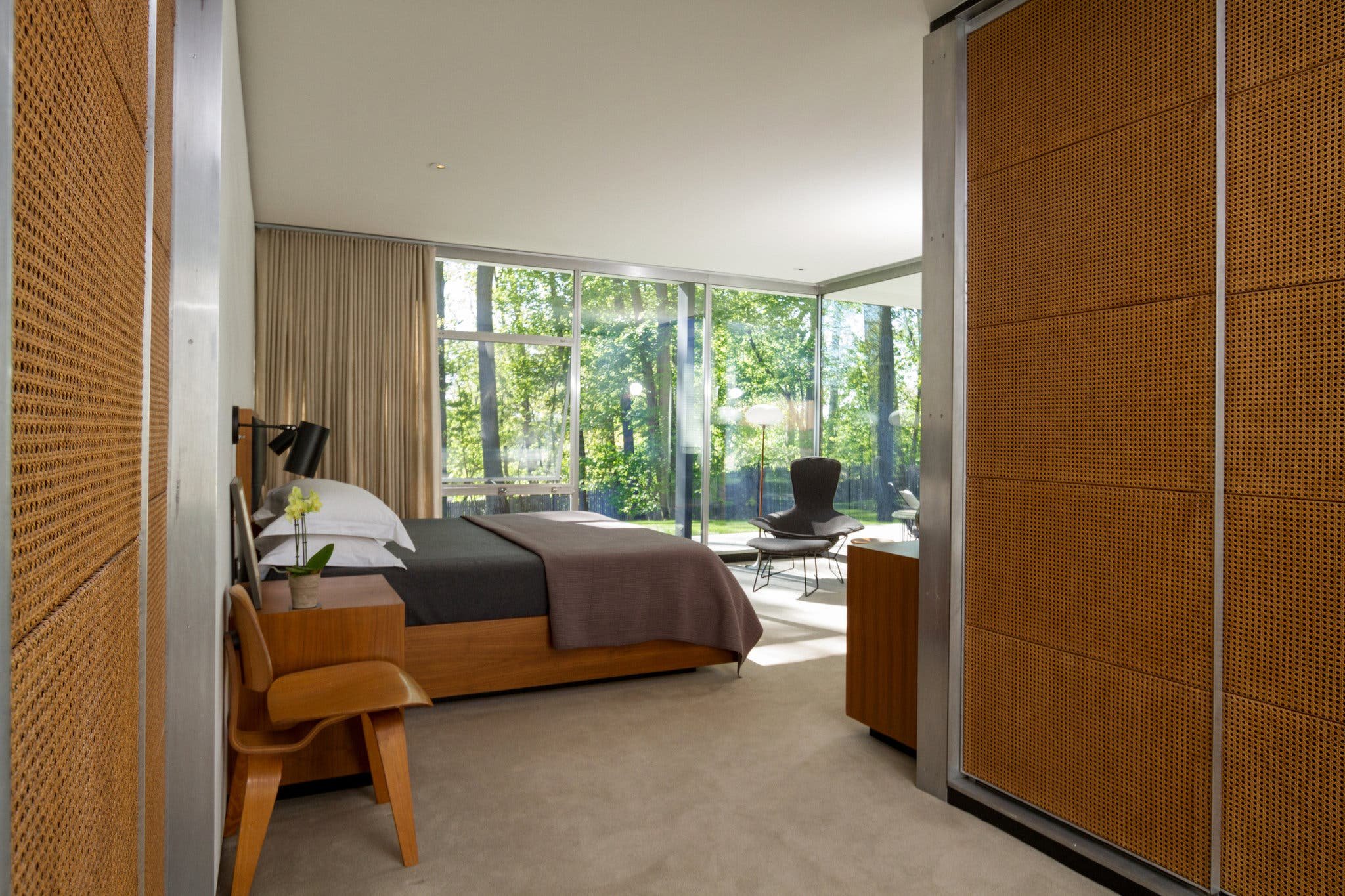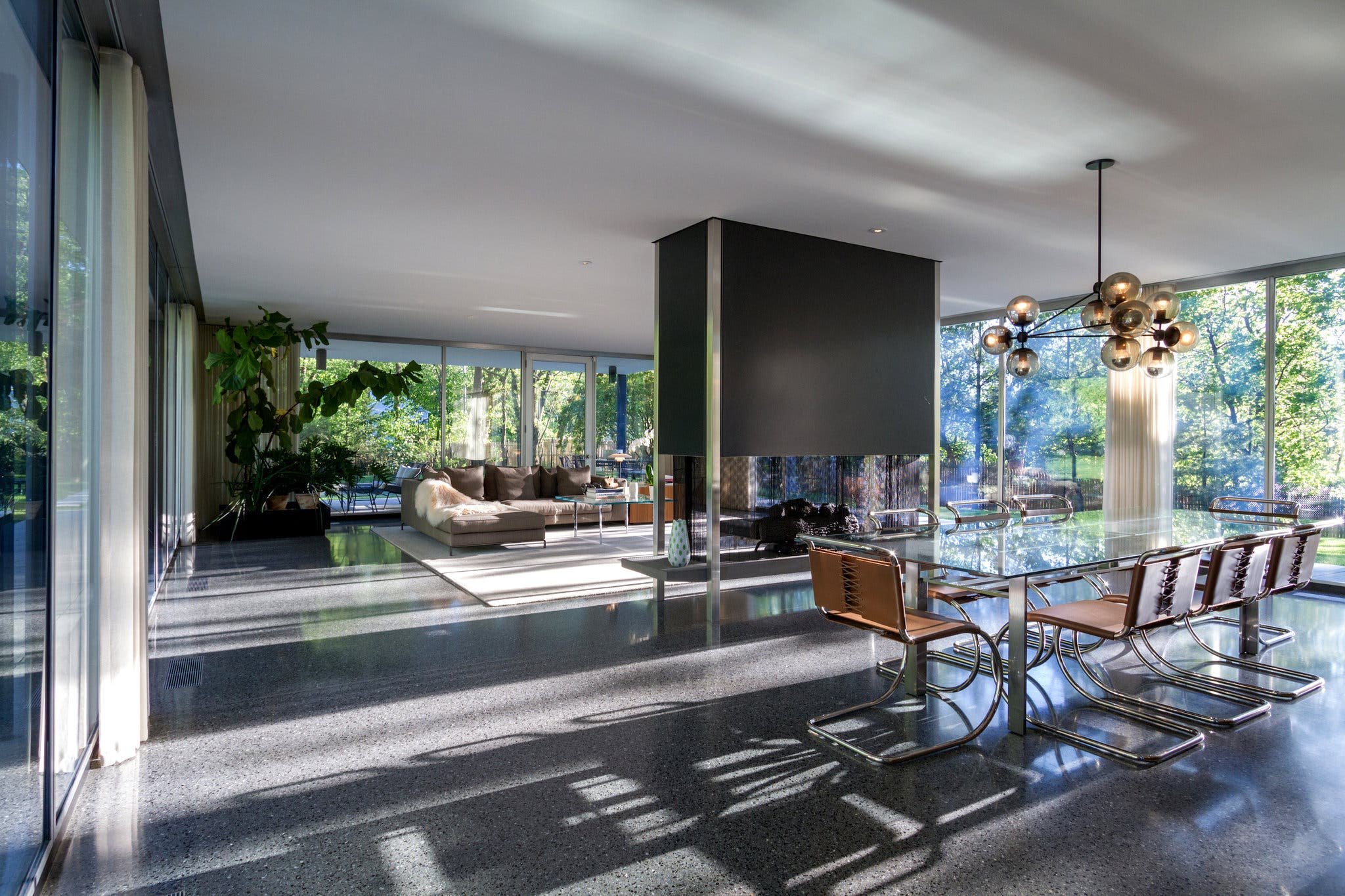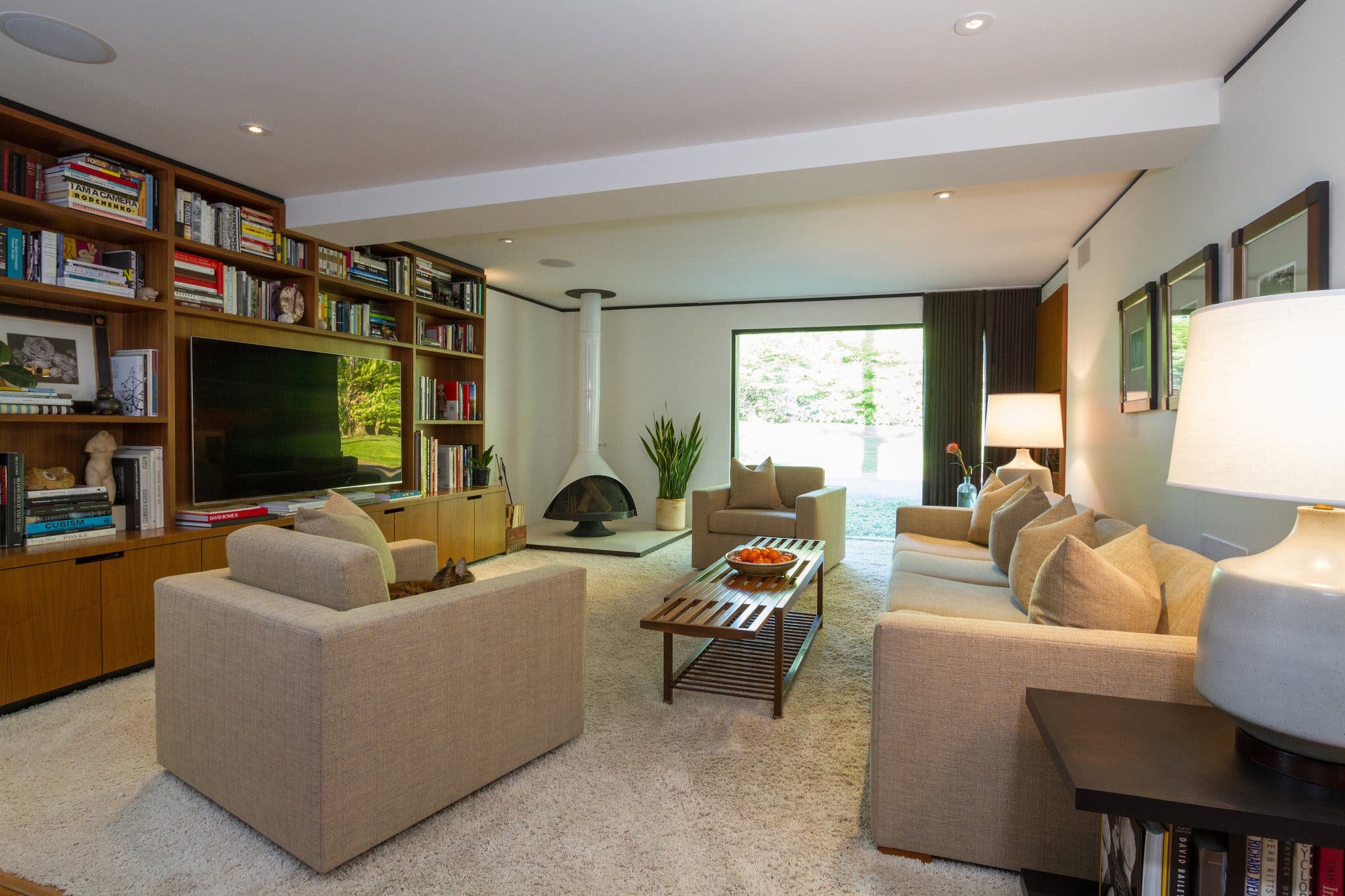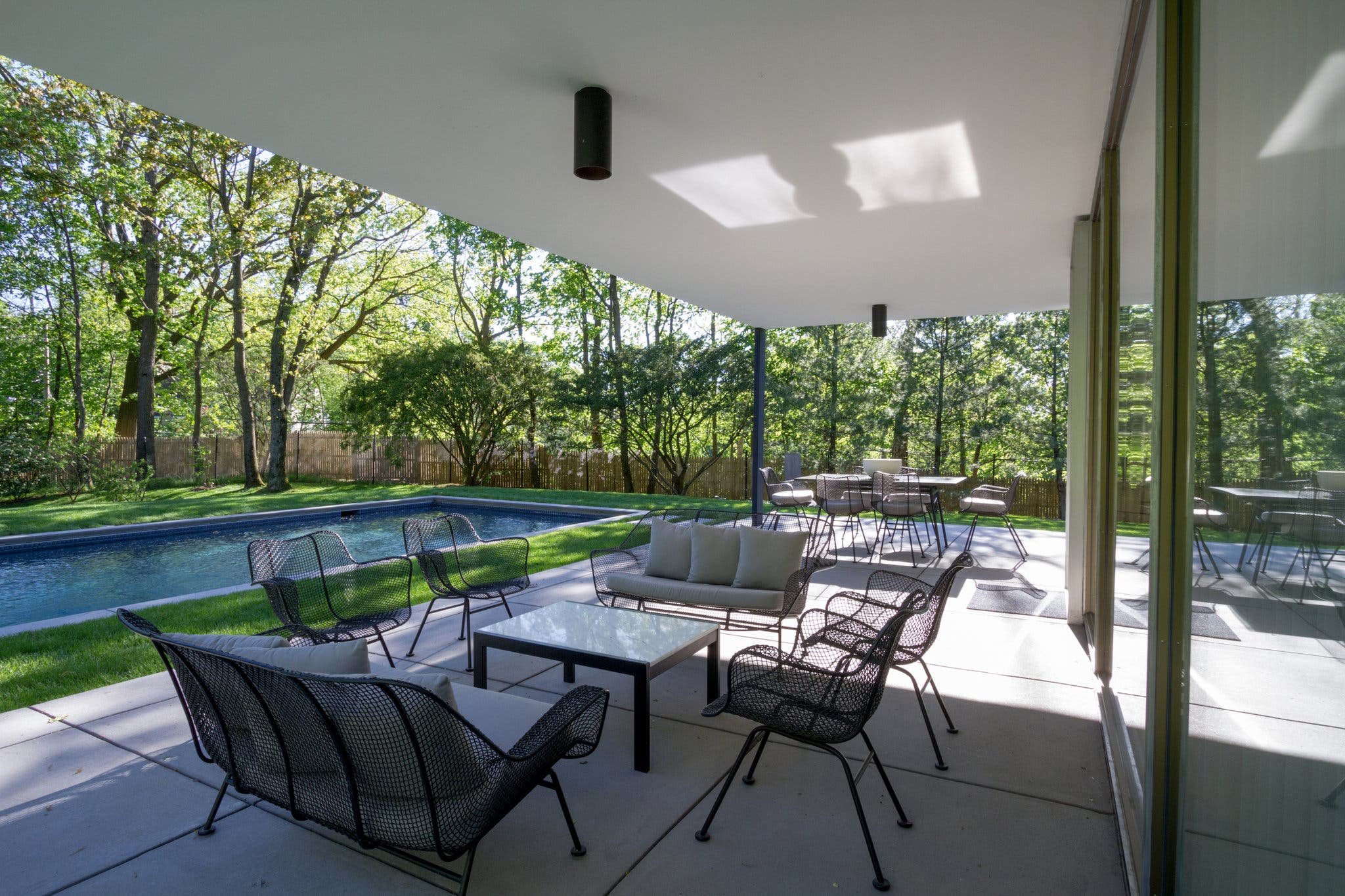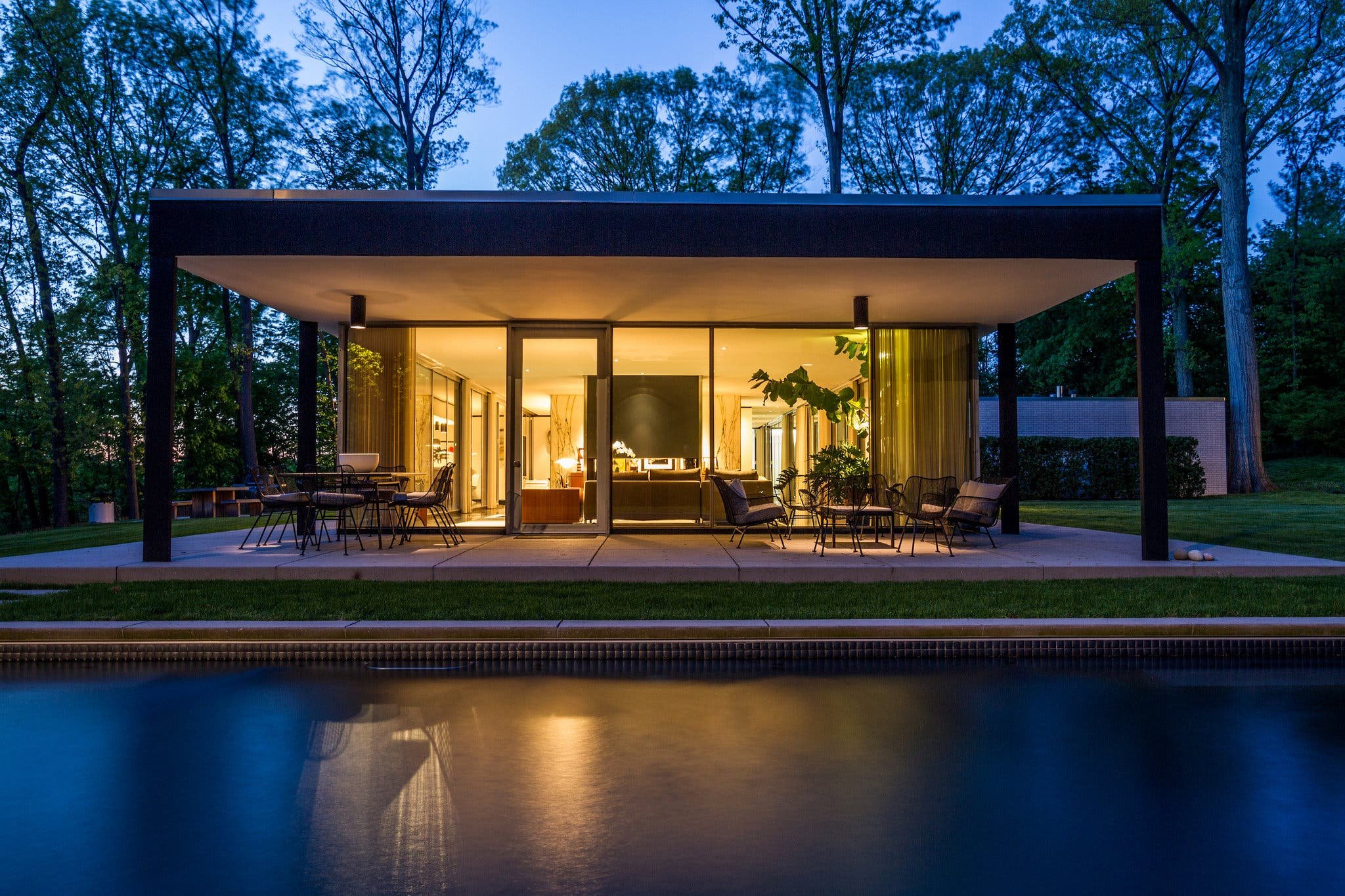The House that Fred Built
Inside legendary designer (GQ, Rolling Stone) Fred Woodward’s former Westchester home.
THIS ARTICLE ORIGINALLY APPEARED IN THE SEPTEMBER 2015 ISSUE OF ARCHITECTURAL DIGEST.
—
Sometimes you find the house. Sometimes the house finds you.
Janice and Fred Woodward have felt this way ever since they settled into their first home as newlyweds—a charming one-bedroom walk-up in New York City’s Greenwich Village—in the 1980s. And it continued as they moved north to a beloved house the suburbs, where they raised two children. “We’ve been fortunate,” says Fred, the longtime design director of GQ. “I’ve always believed that every house we’ve lived in found us.” Never was the sense of kismet stronger than when the couple happened upon their current residence, a modernist glass box set on three bucolic acres in Briarcliff Manor, New York. “Seeing this place for the first time, my heart stopped. I remember thinking, This is remarkable—someone has built their own personal one-story skyscraper.”
The Woodwards: Fred (left) and Janice.
That someone was Roy O. Allen, a partner at the venerable firm Skidmore, Owings & Merrill and perhaps best known as the architect of the US Steel Building (now One Liberty Plaza) in lower Manhattan. Allen had built the home in 1957 and lived in it for about ten years. A couple who’d bought the residence in the early ’70s and had spent four decades there was selling it when Fred came across the listing in a newspaper real-estate insert. “The photo in the ad was no bigger than a postage stamp,” he recalls. “But I could tell the house was something rare, so Janice and I drove over. Afterward, I couldn’t stop thinking about it.”
Once he and his wife pulled the trigger, Fred asked Los Angeles–based interior designer Brad Dunning to have a look at what they’d acquired. “For me,” Dunning says, “all roads lead to or from Mies van der Rohe, so when I saw that glass-and-steel pavilion nestled in the woods, it was a vision. Still, the paint was peeling and the curtains were in tatters. It all made for a midcentury gothic scene. But if you looked hard, you could see a gem.”
And so began a multiyear restoration. At first the Woodwards thought they could keep it simple. “Painting, the small stuff,” Janice says. “We planned on moving in quickly.” But speaking with Dunning and Brooklyn-based architect Sebastian Quinn helped them recognize they had an opportunity to do something special. Which is not to say they weren’t nervous. “We didn’t want to live in a museum,” explains Fred. “We wanted to preserve the spirit but also make it our home. It was a delicate dance.”
Dunning reminded the couple that if Allen were building the house today, he’d employ the same standard he did almost 60 years ago: using the most modern finishes and furnishings available. “My goal is always to respect the original architecture,” says the designer. “But the furniture, art, and objects should be eclectic and can even be contemporary. If it’s all retro or period, you end up with a stage set.”
The biggest changes were replacing the terra-cotta floor with a deep-gray terrazzo and adding the fireplace. Fred initially wanted to install a Scandinavian-style hanging fireplace in a corner of the living room. But after Dunning noted that it would obscure sight lines to the outdoors, Quinn came up with the solution of putting an open fireplace between the living and dining areas, effectively creating a semiseparate dining space. “That was a game changer,” says Fred, who spends lots of time on the living room’s L -shaped sofa, which faces the hearth but also takes in captivating views of the grounds. “Can’t you see I’ve already worn a groove in the cushions?” he jokes.
Janice and Fred share the house with their now-college-age children, Olivia and Hank, who took some time to warm to it. To be fair, a glass house makes demands on the inhabitants. It’s about living—every day—with the philosophy of minimalism. “Believe me,” Fred says with a laugh, “that wasn’t easy for me.” Thanks in part to a long career working with creative people (before GQ he was the art director of Rolling Stone for 14 years), he had amassed a collection of great photographs as well as furniture. “We realized we needed to strip down our lives,” he says. “The house made us recognize what we really needed. It felt good.”
Walking the grounds on an early summer evening, Fred and Janice consider the question: Why live in a glass house? After pausing for a moment Fred offers, “I’ve dreamed of a home like this since art history class my freshman year of college. I remember clearly the moment the professor showed a picture of a Miesian house. I was a kid from a small town in Mississippi, and I couldn’t believe such beauty was possible—that you could live inside art. That image conjured a world I have spent my life pursuing .”
Janice nods, adding, “My favorite time of day is sunset, when I stand outside and see the house glowing warm and serene, like a Japanese lantern. And I can’t decide: Do I want to be out here, admiring the beauty, or do I want to be inside the beauty? It’s a lovely problem to have.”
Fred agrees. He says that some nights, as he’s driving up to the house after work, he almost can’t believe his good fortune: “All I hear is that Talking Heads song with David Byrne singing, ‘This is not my beautiful house.’ But then I remember, Yes, it is!”
Fred Woodward was the long-time art director at GQ, Rolling Stone, and Texas Monthly, and inspiration to almost everybody who designs magazines.



